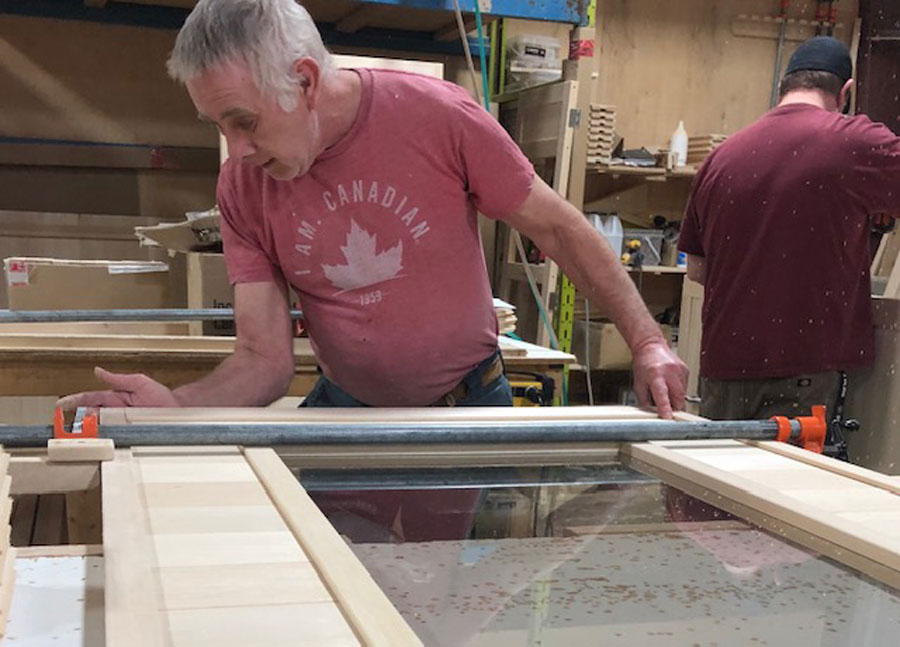Climate change can be a depressing subject when people realize how long it will take to turn around, and how far behind we are in reversing it.
While nations meet and talk and politicians roll out policies for carbon taxes, and airlines sell upgrades to make your air-polluting flight more “carbon neutral”, it’s normal to wonder whether any of it can possibly make a difference.
One way all of us can make a difference every day is to consider the climate future of our planet in our daily purchasing decisions. When buying food, clothing, furniture, cars, simply consider your “climate options.”
What are “Options” when it comes to climate change?
1) Consider how far your product traveled from its origin to your home.
Human reliance on burning fossil fuels is identified as the primary cause of climate change. If you have an option to choose between a product that was made closer to your home or a product that was made on another continent, the one made closer to home is actually “cheaper” no matter what the cost. The reason is that there are invisible costs to buying cheaper imported products. Consider that the pollution restrictions in the country of manufacture may not be as strict as they are in your country. That means significant pollution may have been emitted in transporting the raw materials to the factory or transporting the completed goods to port, and shipping containers full of goods across the ocean in diesel-powered ships, spewing carbon-emitting exhaust adds to the final tally of what the goods truly “cost” us. They cost us the pollution of our air and the warming of our planet.
2) Consider where the manufacturer sources its raw materials from?
Many countries that are manufacturing powerhouses actually source their goods, or at least some of them, from your country. That’s why they can get away with advertising “American components” or “Canadian wood.” The sad fact of the matter is that these components are then shipped to another continent, built into a final product and then shipped all the back to your country. That produces double the pollution in the process. Now you’re starting to see how your own spending habits can help to reduce greenhouse gas emissions every day.
3) What are the pollution regulations in the country of manufacture?
Many consumer goods today are made in countries that do not adhere to the strict pollution controls of your own country. Sometimes that’s why they are selected as a country of manufacture. It’s cheaper to pollute than not to pollute. This creates a competitive disadvantage for made at home manufacturers. It also adds to the list of how many different ways buying offshore products can contribute to climate change. Suddenly your wallet becomes a more powerful tool than a climate accord between nations that are unable to meet their own agreement deadlines. That puts the power back in your hands when it comes to affecting climate change in a positive way.
Climate change is big and scary, and something that is not yet entirely understood. But most developed nations agree that it’s happening and we caused it and it is wise to do what we can to reverse it. It’s an empowering thought to know that, if we’re about to make a purchase with our hard-earned money, we can help to affect climate change in a positive way in the choices we make.
4) How to tell if your product is made in your country or not:
Since the onset of Covid pandemic management, the global supply chain has been severely interrupted. If you are ordering a product online or over the phone and it is not available for 12-16 weeks, then it is most likely coming from offshore.
Secondly, if you ask “what country is your product made in?” and you get more than a one-word answer, ie. the name of the country, then the sales staff are trying to avoid telling you it’s made offshore.
At SaunaRay we built our entire infrared sauna design on making positive changes in human health, and global health. Our selection of non-allergenic Basswood is, in our view, the safest for an infrared sauna. But it’s also a wood that grows swiftly to maturity in only 7 years. That makes it officially and technically a sustainable resource because the product it makes lasts longer than it takes for the raw material to reproduce itself. Western Red Cedar takes at least 100 years to mature, and some old-growth trees are tragically cut after living on earth for 400-500 years. Basswood also reproduces without pollination and instead propagates by root growth, making it a prolific and abundant resource within 100 miles of the SaunaRay factory.
We also have a single partner who cuts the trees from the local forests, delivers them to one site where they are cut into raw lumber, kiln-dried for 21 days, and shaped into the final solid planks of tongue and groove finished wood. That means there is no transportation in the three phases of production of the raw material. This is extremely rare but SaunaRay maintains this level of vigilance over our footprint on our collective Earth. We make it so this is the closest you can get to cutting down the tree in your own back yard, and making the sauna yourself.
SaunaRay also works with local partners to fabricate our stainless steel, safety temper our glass windows and doors, and custom design our medical-grade pure porcelain ceramic heating elements. The elements themselves are made largely from silica beach sand – the most abundant and common mineral on earth. We have never used carbon fiber-style heaters that employ multiple chemicals mixed together at room temperature off-gassing toxins into the air.
When we deliver your brand new SaunaRay you can rest assured that every effort has been made to ensure your medical grade and toxin-free infrared sauna has trodden as lightly on the Earth as possible. That is our pledge to our customers, and our gift back to the Earth that supports us all.


